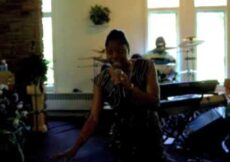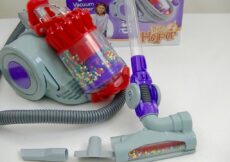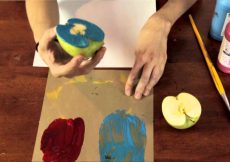Hay fever, also called allergic rhinitis, is a type of nose inflammation that may occur if your child exposed to certain allergens in the air, such as pollen. It is generally due to the overreaction of the immune system to the allergens.
Hay fever mainly affects the nose. However, it can also affect the eyes, sinuses, ears, and throat in some children. Hay fever affects approximately 30% of children and is common in children with asthma and allergic disorders (1).
Seasonal hay fever is commonly seen in children with allergies to pollen during the spring and summer months. And some children with allergies to dust mites and pet dander may experience perennial (year-round) hay fever when exposed to allergens.
Read this post to learn about the signs, causes, risks, complications, diagnosis, treatment, and prevention options for hay fever in children.
Causes Of Hay Fever In Children
Breathing in allergens can trigger hay fever in children. The tiny hairs and mucus in the nose trap allergens in the nose, and these trapped allergens can cause hay fever symptoms in children. Allergens that trigger hay fever may include (1)
- Pollen from trees, grasses, and flowers
- Animal hair or fur (pet dander)
Animal dander, dust mites, and mold spores can cause perennial hay fever (throughout the year), while pollen allergies are often seasonal. However, there can be an increased incidence of hay fever due to specific factors in certain seasons (1).
- Dust mite allergies in winters, when the houses are usually kept closed
- Pet dander allergies in shedding seasons
- Mold allergies from early spring through late summer months
- Tree pollen in early spring
- Grass pollen in late spring and summer
Knowing the cause can help prevent hay fever, and taking precautions and preventive measures in particular seasons can help avoid hay fever in some children. You may seek medical care from an allergist to identify the exact cause of hay fever in your child and plan the treatment.
Risk Factors For Hay Fever In Children
Environmental and genetic factors can trigger hay fever in children. Certain respiratory and skin conditions may also increase children’s risk of developing hay fever. The common risk factors for hay fever in children may include (2)
- Maternal smoking during pregnancy and infancy
- A parent, sibling, or close relative with asthma or allergies
- Residing in an environment with allergens such as dust mites, pollen, and animal dander
Signs And Symptoms Of Hay Fever
The following are the common signs and symptoms of hay fever in children (1).
- Watery, red, swollen, or itchy eyes
- Nasal congestion in one or both nostrils
- Itchy ears, throat, nose, or roof of the mouth
Untreated hay fever can lead to poor sleep quality and cause tiredness and daytime sleepiness in children. Hay fever may also worsen the symptoms of asthma, sinus infections, and eye infections and cause bad breath and sore throat in children. Severe cases of hay fever may also negatively impact a child’s academic performance and learning.
Hay Fever And The Common Cold
The signs and symptoms of hay fever and the common cold are similar and often difficult to distinguish.
Common colds may occur one or three days after exposure to the causative agent and last for three to seven days. In contrast, hay fever symptoms may begin immediately after the exposure to the allergens and last as long the child is exposed.
Although both conditions can cause symptoms such as a runny nose and watery discharge, common colds may cause more thick yellow mucus discharge, body aches, and low-grade fever in children. Hay fever is not associated with fever in children and is also not caused by a virus (2).
Complications Of Hay Fever
Hay fever symptoms may affect a child’s sleep and result in fatigue and tiredness in children. Besides this, the other possible complications associated with hay fever in children include (2)
- Sinusitis: Hay fever can cause prolonged sinus congestion and result in sinus infection and inflammation (sinusitis) in children.
- Asthma exacerbations: Asthma symptoms such as coughing and wheezing can be worsened by hay
- Ear infection: Hay fever can increase the child’s risk for otitis media (middle ear infection) in children.
How To Prevent Hay Fever In Children?
It is difficult to avoid exposure to allergens, such as pollen, completely. However, the following tips may help reduce exposure to allergens in children (3).
- Rub a small amount of petroleum jelly (Vaseline) inside the lower nostrils to prevent allergens from entering the nasal passages.
- Keep the windows and doors closed during the pollen seasons and use air conditioning for ventilation.
- Vacuum the house regularly with machines that have HEPA (high-frequency particle arresting) filters.
- Do not keep fresh flowers inside the room if the child is allergic to pollen allergies.
- Clean house dust with a damp cloth regularly.
- Avoid keeping pets in the child’s room. Groom and bathe the pets to minimize pet dander. Also, seek advice from the veterinarian for tools such as special brushes to minimize fur shedding.
- Avoid smoking anywhere near the child. Breathing in the smoke can trigger hay fever in some children.
- During the pollen season, avoid drying clothes outside. This may bring pollen into the house.
- Wear wrap-around sunglasses and a mask when outdoors during the pollen seasons to prevent pollen from getting into the eyes and
- Change clothes and take a shower after returning home from outdoors.
- Keep the car windows closed while traveling and change the car vent filters
- Avoid camping, playing, or walking in grassy areas, especially in the early morning, evening, and night when the pollen count can be high. Grass cutting can also increase the child’s risk for pollen exposure.
Not all allergies can be prevented. However, you may give preventive medications to your child during peak seasons as per the pediatrician’s recommendations.
Diagnosis Of Hay Fever In Children
The medical history, physical examination, and symptoms can help the pediatrician diagnose hay fever in children. For example, dark circles and creases under the eyes and swollen tissue inside the nose can be seen during a physical examination in children with hay fever (4).
The pediatrician may refer the child to allergists, who may do skin tests to identify the cause. Other tests may also be ordered to identify or exclude any other medical conditions in children.
Treatment For Hay Fever
There is no specific cure for hay fever. However, the existing treatments may help improve symptoms and provide relief. Identifying the cause and avoiding or minimizing exposure to allergens is the best way to manage hay fever in children.
The following medications are often prescribed to treat hay fever in children (1).
- Immunotherapy for severe hay fever. This is a long-term treatment involving gradual exposure to allergens to build up a tolerance.
Over-the-counter medications are not recommended for allergic conditions in children. However, you may consult a pediatrician and get prescription medications based on your child’s symptoms, severity, and health status.
Children with allergies should be evaluated by an allergic specialist. Avoiding the triggering factors can minimize the incidence of hay fever. Seek medical care if your child shows the symptoms since untreated cases can impact their quality of life and often result in complications.
References:
MomJunction’s health articles are written after analyzing various scientific reports and assertions from expert authors and institutions. Our references (citations) consist of resources established by authorities in their respective fields. You can learn more about the authenticity of the information we present in our editorial policy.



































